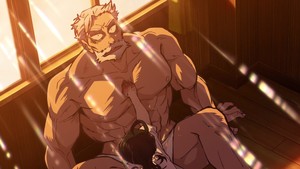
Exploring the Beginnings of "SANDA": A Unique Take on the Santa Claus Mythos
The anime landscape is ever-evolving, with creators constantly pushing the boundaries of storytelling and imagination. One such series capturing attention recently is "SANDA," helmed by Paru Itagaki. Known for her innovative narratives, Itagaki’s take on the Santa Claus mythos is no exception. From its whimsical interpretation of the classic legend to its deeper societal commentary, "SANDA" is an intriguing blend of fantasy and reality.
The Enigmatic World of SANDA
"SANDA" introduces us to a world where the traditional folklore of Santa Claus is reimagined in the life of a 14-year-old protagonist, SANDA. What sets this series apart from others is its audacious premise: SANDA transforms into a super-powered Santa when his classmate, Fuyumura, needs help. The catch? She initiates this transformation by stabbing him with a red-stained shirt. This quirky yet dark twist is a nod to Itagaki's flair for combining unconventional elements, keeping audiences both amused and curious.

Innovative Takes on Santa Lore
The series cleverly reinterprets Santa mythos with creative liberties. SANDA, as a character, inherits unique traits such as fire-resistance – an attribute humorously tied to Santa’s chimney escapades. This peculiarity, alongside his ability to discern lies through falling objects, layers the narrative with a fresh perspective that fans of offbeat stories will appreciate.
A Dystopian Future
The setting of "SANDA" is equally enticing. It occurs in a future where children are revered and their growth scrupulously monitored due to dwindling birthrates. The school, depicted as a compound, is run by the enigmatic Oshibu, who embodies eternal youth via advanced plastic surgery. This dystopian backdrop prompts viewers to reflect on contemporary societal issues, such as the obsession with youth and the implications of an aging population – themes rarely explored in anime.
The Animation and Artistry
No discussion of "SANDA" would be complete without lauding its animation. Science SARU, the studio responsible, breathes life into Itagaki’s minimalist yet expressive art style. The dynamic visual storytelling enhances even the most fantastical scenes, making it easier for audiences to suspend disbelief and plunge into SANDA’s universe.
English dub performances offer an additional layer of entertainment. Though slightly exaggerated, as is often characteristic of anime, the voice work—particularly by Ben Balmaceda—injects charisma into buff Santa, ensuring the character resonates with the audience.
Concluding Thoughts
"SANDA" stands as a beacon of creative storytelling in the anime world. While its eccentric interpretation of Santa Claus may not resonate with everyone, those who find joy in unconventional narratives are in for a treat. With only three episodes aired, expectations are set high for the unfolding storyline.
Paru Itagaki's ability to weave fantastical elements with deep-rooted cultural critiques continues to engage audiences in unexpected ways. As the series progresses, viewers are left eagerly anticipating how SANDA will further unravel its ambitious themes and complex characters.
For fans intrigued by unique narratives and imaginative worlds, "SANDA" offers a bold, refreshing escape. It’s not just a reimagining of folklore but a daring examination of contemporary issues, wrapped up in an entertaining, animated package.
By exploring these themes and narratives, "SANDA" is paving its path as an innovative entry in the anime genre. For additional insights into similar thematic explorations, see this overview of dystopian themes in media.
https://www.myanimeforlife.com/sanda-series-debut/?feed_id=151774&_unique_id=6901d318e333b
Comments
Post a Comment